skip to main |
skip to sidebar
 Dr. C.V. Raman was one of the greatest scientists of India, who was awarded the 1930 Nobel Prize in physics for his work on the scattering of light and for the discovery of the ‘Raman Effect’, which is named after him. Chandrasekhar Venkata Raman, commonly known as C.V. Raman was born on November 7, 1888 at Tiruchirapalli in Tamillandu. His mother tongue was Tamil. He was the second children of Chandrasekhar Iyer and Pravathi Ammal. His father was a lecturer in mathematics and physics. Raman was a very brilliant student right from his childhood.
Dr. C.V. Raman was one of the greatest scientists of India, who was awarded the 1930 Nobel Prize in physics for his work on the scattering of light and for the discovery of the ‘Raman Effect’, which is named after him. Chandrasekhar Venkata Raman, commonly known as C.V. Raman was born on November 7, 1888 at Tiruchirapalli in Tamillandu. His mother tongue was Tamil. He was the second children of Chandrasekhar Iyer and Pravathi Ammal. His father was a lecturer in mathematics and physics. Raman was a very brilliant student right from his childhood.
At an early age, Raman moved to the city of Vishakhapatnam, which is situated in state of Andhra Pradesh, where his father accepted a position at the Mr. A V N College. Raman’s academic brilliance was established at a very young age. At the age of twelve, he finished his matriculation education and entered Mr. A V N College and two year later moved to the prestigious presidency college in Madras (Chennai). When he was the age of fifteen he finished at the head of the class too received B. A. with honours in physics and English. In those days, it was a system of government that students who did well academically were typically sent to abroad (England) for additional studies. Because of Raman’s poor health, he was not allowed to go abroad and he continued his studies at the same college. In 1907, barely seventeen, Raman received his Master degree with honors. He got first position in the University in M.A. In the same year, he married with Lokasundari Ammal and with whom he had one son, Radhakrishnan.
He completed his education in Visakhapatanam and Madras (Chennai). After getting top ranking in the Financial Civil Service competitive Exam, he was appointed as Deputy Accountant general in Calcutta. At the time of his graduation, there were few opportunities for scientists in India. This forced him to accept a position with the Indian Civil Services as an Assistant Accountant General in Calcutta. While there, he was able to sustain his interest in science by working, in his remaining time, in the laboratories of the Indian Association for the Cultivation of Science. He studied the physics of stringed instruments and Indian drums.
In 1917, Raman was offered the position of Sir Taraknath Palit Professorship of Physics at Calcutta University. He stayed there for the next fifteen years. During his tenure there, he received world wide recognition for his work in optics and scattering of light. He was elected to the Royal Society of London in 1924 and the British made him a knight of the British Empire in 1929. In 1930, Sir C.V. Raman was awarded with Nobel Prize in Physics for his work on scattering of light. The discovery was later christened as "Raman Effect".
In 1934, C.V. Raman became the director of the newly established Indian Institute of Sciences in Bangalore, where two years later he continued as a professor of physics. Other investigations carried out by Raman were: his experimental and theoretical studies on the diffraction of light by acoustic waves of ultrasonic and hypersonic frequencies (published 1934-1942), and those on the effects produced by X-rays on infrared vibrations in crystals exposed to ordinary light. In 1947, he was appointed as the first National Professor by the new government of Independent India. He retired from the Indian Institute in 1948 and a year later he established the Raman Research Institute in Bangalore, where he worked till his death.
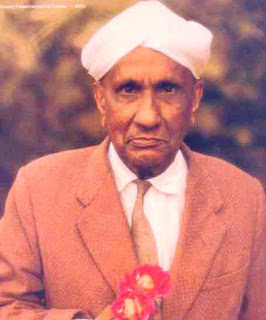
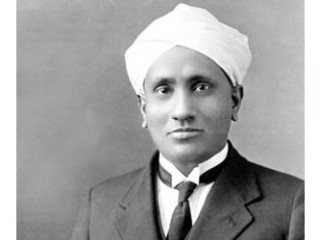


Homi Jehangir Bhabha was a renowned Indian atomic scientist who laid the foundation of a scientific establishment in independent India. He is also credited with establishment of premier institutions including Tata Institute of Fundamental Research and Bhabha Atomic Research Centre. He served as the first chairman of India’s Atomic Energy Commission. Homi Bhabha was born to a rich Parsi Family in Mumbai on October 30, 1909. He completed his graduation from Elphinstone College and the Royal Institute of Science. Later on, he went to Cambridge University and received his doctorate in 1934. He got the opportunity to work with Niels Bohr on the quantum theory. He also worked on the cascade theory of electron showers. He also worked intensely in the identification of the meson. Homi Bhabha set up the Cosmic Ray Research Unit at the IISC, Bangalore in 1939 under CV Raman. In 1945, he became the director of the Tata Institute of Fundamental Research which he had established with the assistance from J.R.D. Tata.
In 1948, Homi Bhabha established the Atomic Energy Commission of India for the development of atomic energy for peaceful purposes. Subsequently the first atomic reactor began its operation at Trombay in 1956. He chaired the UN Conference held in Geneva on the Peaceful Uses of Atomic Energy in 1955. He advocated the international control of nuclear energy and utilizing the nuclear energy for alleviating poverty.
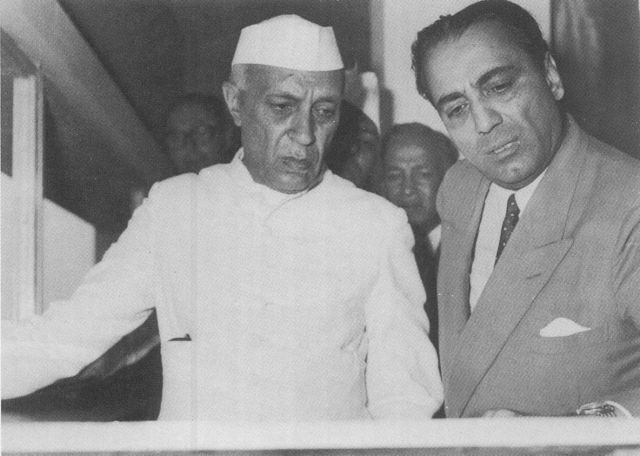
Cosmic rays are fast-moving, extremely small particles coming from outer space. When these particles enter the earth's atmosphere, they collide with the atoms in the air and produce showers of electrons. In 1937, Homi Jahangir Bhabha, an Indian physicist, and W. Heitler, a German physicist, solved the mystery surrounding these rays and became world famous.
Bhabha went a step further. He recognized the presence of a new nuclear particle in the showers, which he called "meson". In this particle he also found experimental proof of Einstein's theory of relativity.
In 1940 this young physicist returned to his homeland from England. War had broken out in Europe and science, like everything else, was geared to the purposes of war and destruction.
He joined the Indian Institute of Science, Bangalore, and began to do research on cosmic rays, with huge retrievable plastic balloons carrying instruments high up in the sky. Cosmic rays and revealed some revolutionary facts about the nature of matter and research, he thought, might reveal still more on this subject. And, if research in cosmic rays could be taken up in the country, Indian scientists could, within a short time, be in the forefront in physics. Modern techniques in nuclear, high energy and elementary particle physics could also be developed in the country. He wanted to have an institute exclusively developed to research in this field.
Meanwhile, Bhabha was elected Fellow of the Royal Society for his contributions relating to cosmic rays, elementary particles and quantum mechanics. His voice commanded attention and all scientists supported his idea of building a research institute. Bhabha was related to the Tatas, the country's pioneering industrialists. In 1944 he wrote a letter to the Tata Trustees urging them to build an institute. He argued that the country would not then have to look abroad for experts when nuclear plants for electric power generation came to be built. While other scientists were trying to tap energy from the atom for destructive purposes, he was thinking of its peaceful uses.
In 1945, the Tata Institute of Fundamental Research was set up. Two years later, when the country gained independence, his ideals gained more significance. Jawaharlal Nehru, the first Prime Minister, also wanted to make the country self-sufficient in science and technology and he gave Bhabha a free hand to do what he wanted.
In 1948 the Atomic Energy Commission was set up and Bhabha made its Chairman. From then on, nuclear energy research has steadily gathered momentum in the country. Under the expert guidance of Bhabha, three atomic reactors, Apsara, Cirus and Zerlina, were built. Survey for uranium ore continued and plants to purify the required materials were also built.
Construction of the country's first atomic power station began at Tarapur in 1963. Two years later a plutonium plant was installed, which was hailed as a "great step". In short, Bhabha showed his countrymen and the world that Indians were second to none in gaining scientific knowhow. The climax came on May 18, 1974, when Indian scientists exploded a nuclear device for peaceful purpose at Pokhran in Rajasthan. India became the sixth country to join the nuclear club.
Bhabha also encouraged research in electronics, space science, radio astronomy and microbiology. The telescope at Ootacamund is one of his creations. He was also one of the eminent members of the "atom for peace" conference. It was during one of his visits abroad that he died in a plane crash at the age of 57. The nation mourned his sudden death. In 1967, the Atomic Energy Establishment, Trombay, was renamed the Bhabha Atomic Research Center as a tribute to his dedication and work.

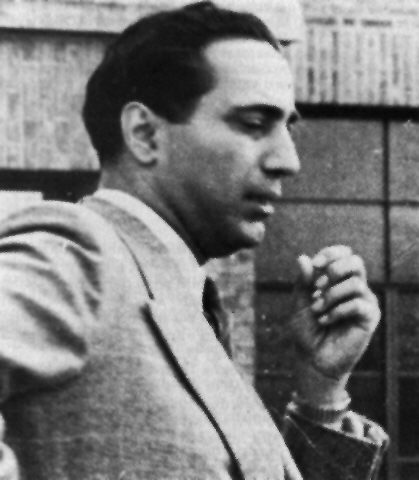
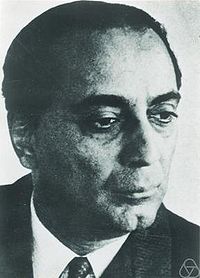
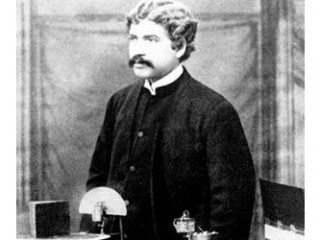 Sir Jagadish Chandra Bose, generally known as J.C. Bose, occupies a unique position in the history of modern Indian science. He is regarded as India’s first modern scientist. Jagdish Chandra Bose was an Indian physicist who pioneered the investigation of radio and microwave optics. Bose was born on November 30, 1858 in Munshiganj District in Bengal (Now situated in Bangladesh). His father Bhagwan Chandra Bose served the British India Government in various executive and magistrate of Faridpur and it is here Bose’s early childhood was mainly spent.
Sir Jagadish Chandra Bose, generally known as J.C. Bose, occupies a unique position in the history of modern Indian science. He is regarded as India’s first modern scientist. Jagdish Chandra Bose was an Indian physicist who pioneered the investigation of radio and microwave optics. Bose was born on November 30, 1858 in Munshiganj District in Bengal (Now situated in Bangladesh). His father Bhagwan Chandra Bose served the British India Government in various executive and magistrate of Faridpur and it is here Bose’s early childhood was mainly spent.
On May 10, 1901, the hall of the Royal Society in London was packed with eminent scientists. They were watching Jagadish Chandra Bose conduct experiments to show that plants and metals have feelings.
Among several experiments he conducted was this one: A highly sensitive instrument-one of Bose's inventions to record the "pulse" of plants-was connected to a plant. The plant, with its roots, was carefully picked up and dipped up to its stem in a vessel containing bromide, a poison. Bose looked expectantly at the light spot on a screen meant to indicate the pulse of the plant. So also did everyone else.
The plant's pulse beat, which the spot recorded as a steady to-and-fro movement like the pendulum of a clock, began to grow unsteady. Soon, the spot vibrated violently and then came to a sudden stop. It was almost like a poisoned rat breathing heavily and jerking its legs and tail its struggle against death. The plant had died because of the poison.
The experiment was greeted with thunderous applause. However, some physiologists, who steady the processes that like place inside a living organism, were not happy. Not only was Bose, a physicist, an intruder into their field, but he had, by his experiments, upset the well-known theories of some eminent physiologists present there. They were critical of Bose's conclusion that "plants and metals have life". They urged the Royal Society not to publish his lecture unless he made certain changes. Bose refused to make these changes and his experiments went unnoticed for a time. He was, however, not a person to accept defeat easily. He had acquired the quality to fight against odds from his childhood.
He started his education in a vernacular school. Then he joined the St. Xavier’s School and college at Calcutta (Kalkata). He passed the Entrance examination (equivalent to school graduation) of Calcutta University in 1875. He received a B.Sc. from Calcutta University in 1879. In January 1882, Bose left London for Cambridge where he took admission in Christ’s College to study natural sciences. His decision to join the Christ’s College was influenced by the fact that his brother -in-law, Ananda Mohan Bose had earlier studied there. Ananda Mohan, who took the Mathematics Tripos in 1874, was Cambridge’s first Indian wrangler in 1884 Bose obtained a Bechelor of Arts with a second class in natural sciences tripos and in the same year he also obtained a Bechelor of Science from the University of London.After completing his education he came back to Kolkatta and was appointed professor of physical science at Presidency College, Calcutta and holds this post till 1915. In 1917 he founded Bose Research Institute and became director of the same institute at Calcutta and remained in the post until his death on November 23, 1937. Jagadish Chandra Bose was one of the pioneers of modern science in India. His research was on the properties of electro-magnetic waves.
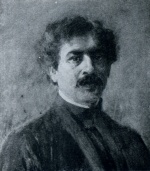
Meghnad Saha is the Indian astrologist who did research on changes in the stars and their temperature. He was born in Seoratali in Dhaka in Bangladesh on October 6th, 1893. He was the last of the five children and he developed with the help of studies. His family used to starve with hunger because the money earned by his father was not sufficient for them. His father tried to stop Saha from studying and join him in any work. Teachers of Saha had observed his activeness and asked his father to join in Boarding school with the help of sponsors. Saha had studied well and won many scholarships and went to Dacca to study higher studies. He was dismissed for being against the governor who attended the function. He had joined in another school and got scholarship in that school also.
There are popular people among the teachers who taught Saha like Jagadesh Chandra Bose and PC Ray. Satyandranath was his classmate in Kolkata residency school. After the completion of M.Sc, he was busy with experiments as British government did not give him job. He also taught tuitions and later on, he joined as professor in Kolkata. Saha had explained about ionization while explaining the reason for formation of spectrum. He was also able to explain the temperature and other principles of sun. He was elected for fellow of Royal Society in London. He had done research in spectroscopy and ionosphere while working as professor in Allahabad University. Saha had designed the device which detects the weight and stress of the sun rays. He did research on ancient rocks, radiations from the sun and radio principles. He had started nuclear physics in Kolkata University in 1948.
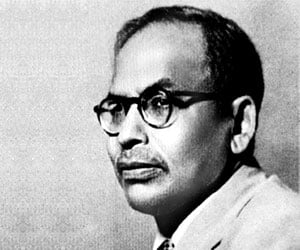
In 1917, He started his professional career and joined as lecturer at the newly opened University College of Science in Calcutta. He taught Quantum Physics. Along with S.N. Bose, He translated the papers published in German by Einstein and Hermann Minkowski on relativity into English versions. In 1919, American Astrophysical Journal published – “On Selective Radiation Pressure and its Application” – a research paper by Meghnad Saha. He put forward an “onization formula” which explained the presence of the spectral lines. The formula proved to be a breakthrough in astrophysics. He went abroad and stayed for two years. He spent time in research at Imperial College, London and at a research at Imperial College, London and at a research laboratory in Germany. In 1927, Meghnad Saha was elected as a fellow of ‘London’s Royal Society’.
In 1932, Meghnad Saha moved to Allahabad, Uttar Pradesh Academ y of Science was established. He returned to Science College, Calcutta in 1938. During this time, Saha got interested in Nuclear physics, which later was named after him as Saha Institute of Nuclear physics in the curriculum of higher studies of science. Having seen cyclotrons used for research in nuclear physics abroad, he ordered one to be installed in the institute. In 1950, India had its first cyclotron in operation. He invented an instrument to measure the weight and pressure of solar rays. He produced the famous equation, which he called ‘equation of the reaction-isobar for ionization’, which later became known as Saha’s “Thermo-Ionization Equation”.
Saha was the leading spirit in organizing the scientific societies like the ‘National Academy of Science’ (1930), ‘Indian Institute of Science’ (1935), and the ‘ Indian Association for the Cultivation of science’ (1944). The lasting memorial to him is the ‘Saha Institute of Nuclear physics’ founded in 1943 in Calcutta. He was the chief architect of river planning in India. He prepared the original plan for Damodar Valley Project. Meghnad Saha was an Indian astrophysicist who nominated for the ‘Nobel prize’ in physics in 1935-36. In 1952, he was elected as a Member of Parliament for the North-West Calcutta constituency. He was an advocate for the peaceful use of nuclear energy and instrumental in the reformation of the Indian calendar. He died on February 16, 1956 due to a heart attack.















